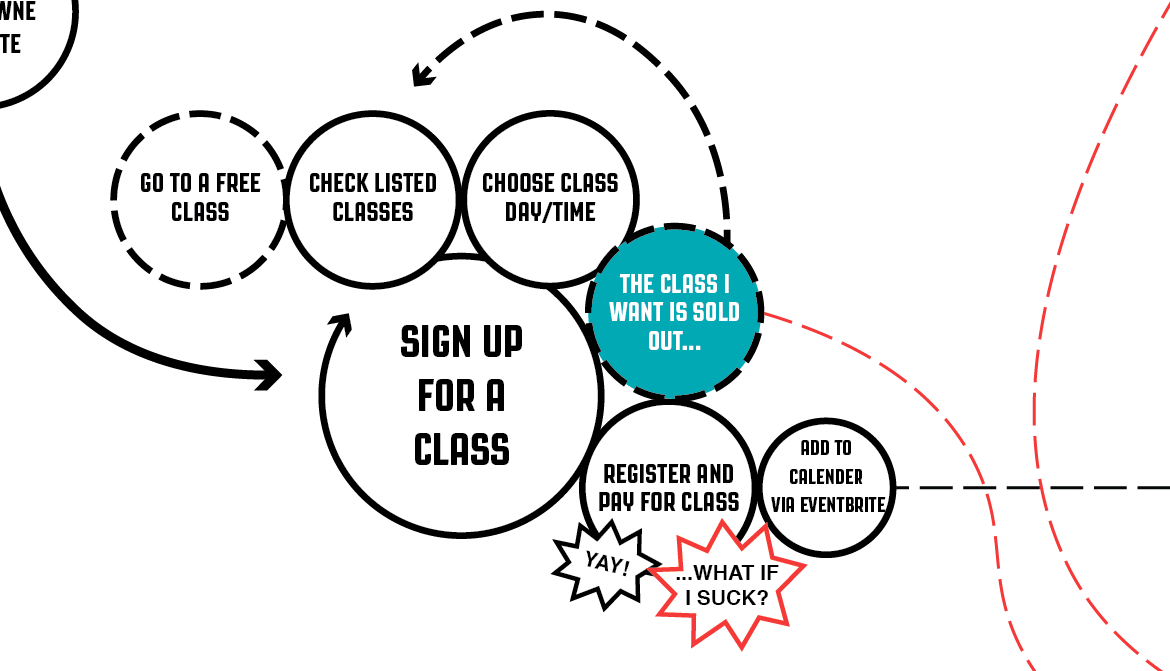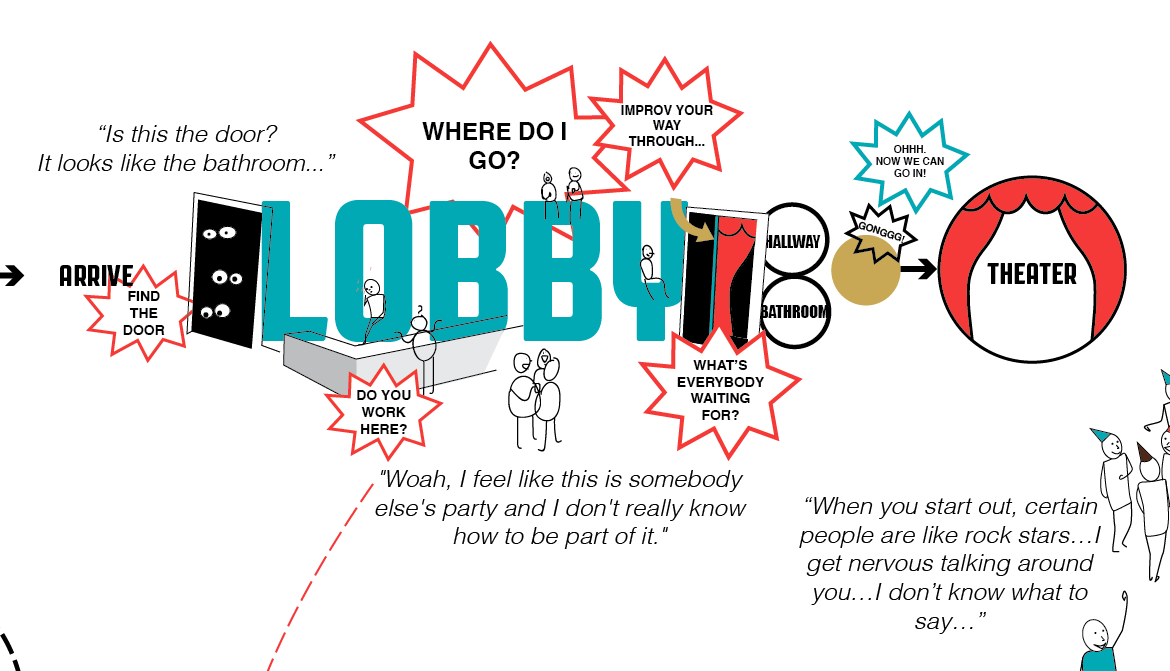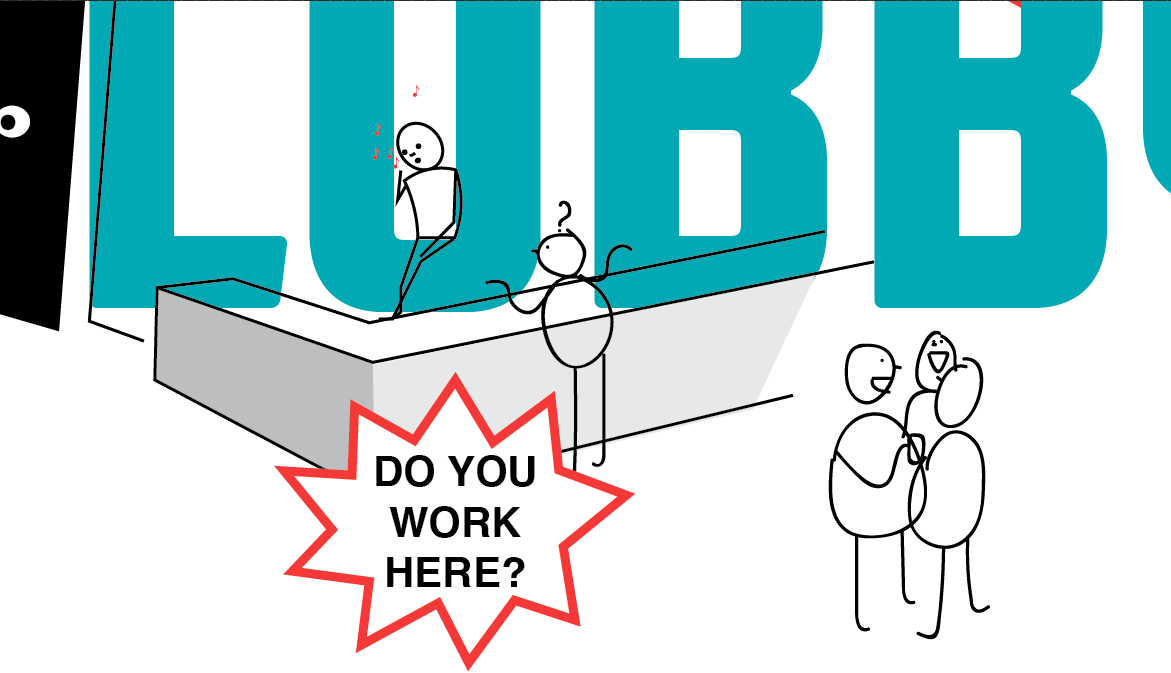Overview
Worked with a local improv theater to improve retention rates for new students.
Identified perceived problems in joining the community.
Prototyped changes to the physical space and developed strategies to reduce social pressure.
ColdTowne Theater tested our changes, and will be making them permanent.
Background
ColdTowne's Stool Pigeon show. Photo by Philip Koske.
At AC4D, Philip Koske and I took on a two month service design project at ColdTowne Theater in Austin, TX. ColdTowne is an comedy theater with shows 7 nights a week. They boast a vibrant community of improv-comics, teach classes, and become a second home to many of the people who perform there. ColdTowne students develop the skills to be more creative, open, and confident with others by learning and playing with professional comedy techniques.
Why Improv?
We took a look at the customer journey through ColdTowne as a new student. To develop our understanding of ColdTowne and the community, we started going to shows, classes, talking to people, and observing behavior in the theater.
One thing that surprised us at the start--having never done improv ourselves--was the variety of reasons people got involved. Everyone we spoke to was seeking community: some were seeking out a community of comics, but most wanted to build social skills to be more involved and open in their own lives. We expected more people to be there to build their comedy skills, but more often than not, they just wanted to be better communicators.
Barriers
Entrance is an obstacle, and only regulars know the code.
Despite having an abundance of people looking for community, walking into ColdTowne the first time felt unwelcoming and confusing.
New students are desperate for an invitation to join the social life of ColdTowne.
Many people who came to ColdTowne to have fun and learn social skills felt pushed into a competitive environment that was more suited for professional comedians working to hone their craft. Students who graduate without a regularly performing comedy troupe feel cut off from the personal benefits of improv.
Philip and I collaborated on a customer journey map to illustrate some of the barriers and opportunity areas we saw both within the space and the community. We focused on two main touch-points: the lobby area, because it serves as an introduction to ColdTowne for a lot of people; as well as the social structure, which can lead to an early exit.
Opportunities
The first communication skill new improvisors learn is the CROWE method; to have a successful improv scene, performers must establish their characters, relationship, objective, where they are, and their emotion.
It struck me that ColdTowne wasn’t using the improv tool they were teaching first. The theater itself wasn’t being a very helpful improv partner, and was leaving the visitor to do all the work. If a new student (character) was walking into ColdTowne to see their first show or to take their first class (objective), there was nothing to orient them to where they were in the space (where), who they should be talking to, or who was working (relationship/character), and they’d feel frustrated or embarrassed (emotion).
As it was, ColdTowne greeted users with an unlit door on a black wall. There was no signage indicating that it was a comedy theater, many people walk in assuming it's part of the I Luv Video next door. A light up arrow pointed to the hallway that holds both the restrooms and the theater. I many more signs, most important among them: signs pointing out the entrance, ticket counter, and theater.
Prototyping and testing
We made prototypes out of paper and foam-core to test during a popular weekend show. We believed that even simple badges to show who's working would be a big help in alleviating the disorientation of new visitors. We concentrated on simple, DIY solutions that would be easy to implement and maintain. ColdTowne has people coming and going 7 nights a week. Most of the staff are interns, except for management and teachers.
We focused many of our ideas on fostering easy, authentic connections between new and existing students, in addition to keeping the community engaged even without classes. We pitched a "Video Cagematch" as an online sister to ColdTowne's on-stage bracket competition, a weekly "improv workout" that would allow those unable to commit to a class to keep up their improv skills, and social games like BINGO for student events.
We tested our BINGO cards one night and watched as closed off groups started turning to each other in the lobby asking each other to "do a Chewbacca impression" or "do you listen to any podcasts?" One regular walked up to Philip and I and told us, "I've been around these parts a long time. It's always sequestered group, sequestered group, sequestered group... I haven't seen anything like this."
ColdTowne has continued using our BINGO cards for student events. They are making some of our foam-core signs permanent fixtures. After the show the night we prototyped, I was talking to one of the managers who was staring around at the signs we put up. She said "It's so simple. I mean it's not simple, but it's so simple!" I understood what she meant by that. Talking about improving a space or service can be so daunting. It can feel like you've got to change everything to make it the best possible experience. I think we both learned in this process that simple changes can have a huge impact. It was so inspiring to work with all the creative people at ColdTowne, and see them thinking about their space and their community differently.
Names of participants have been changed.
























